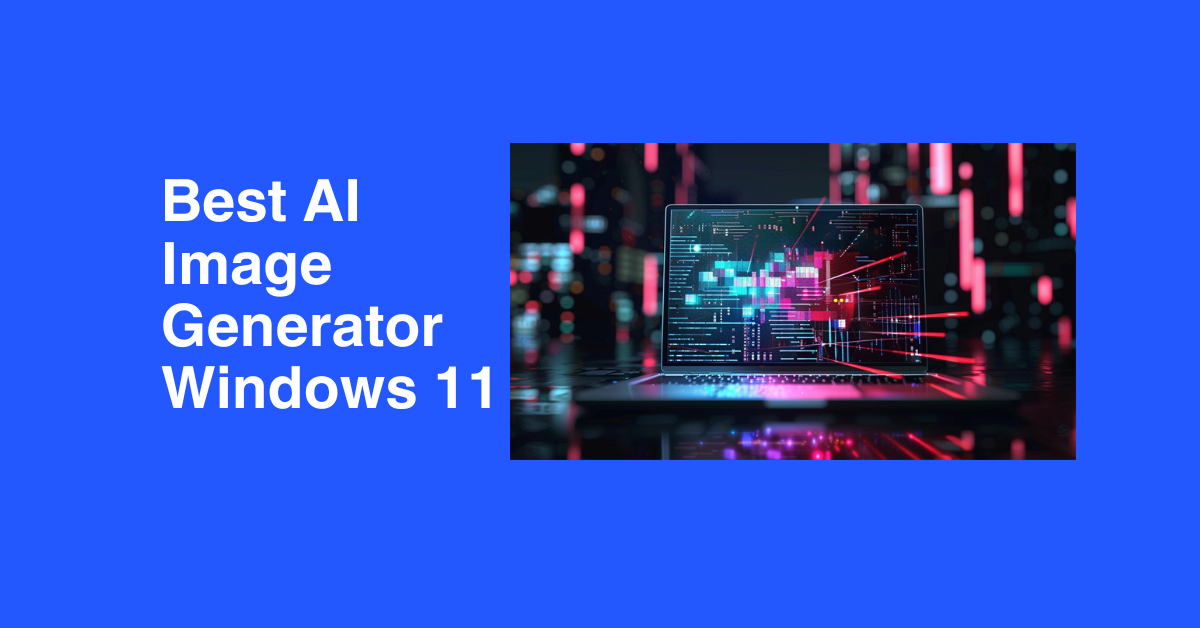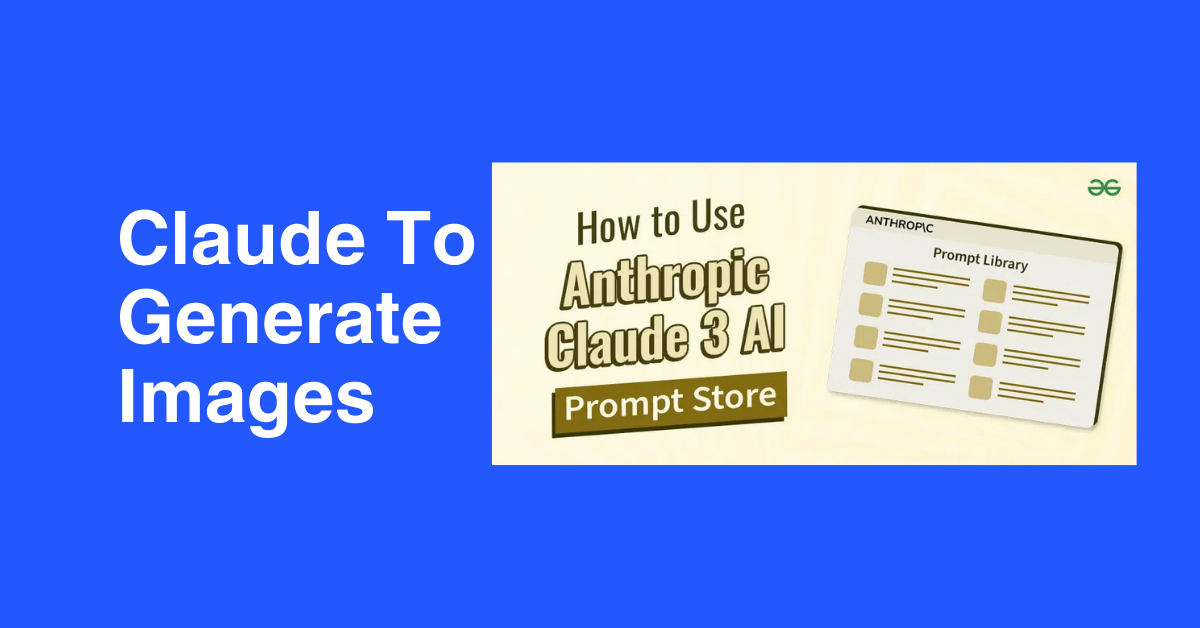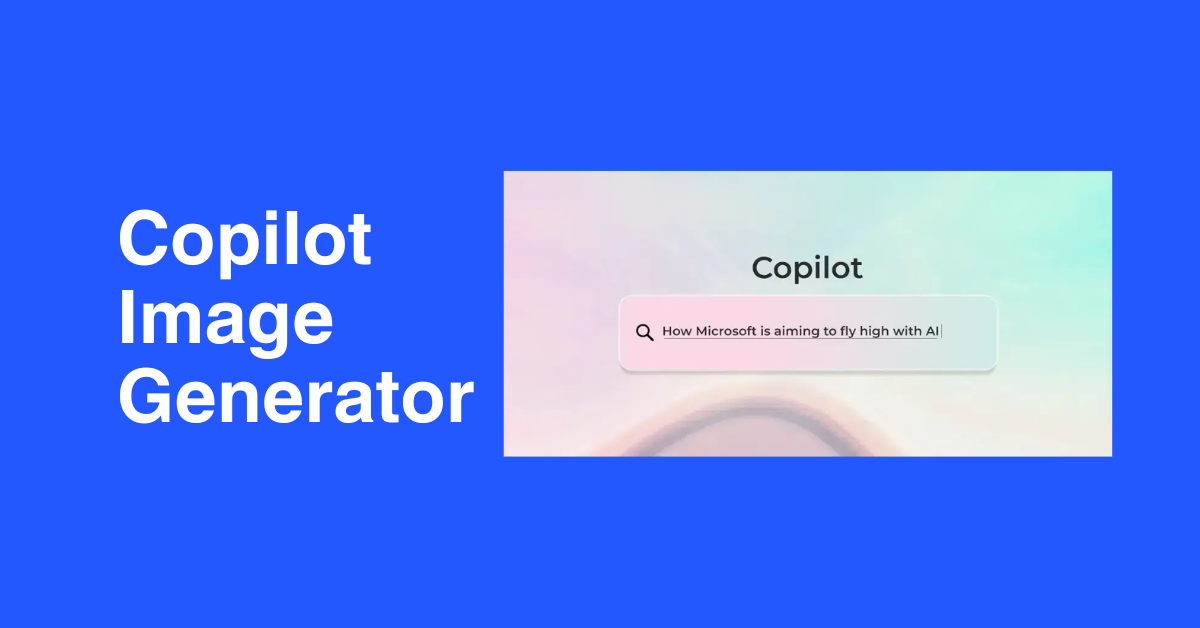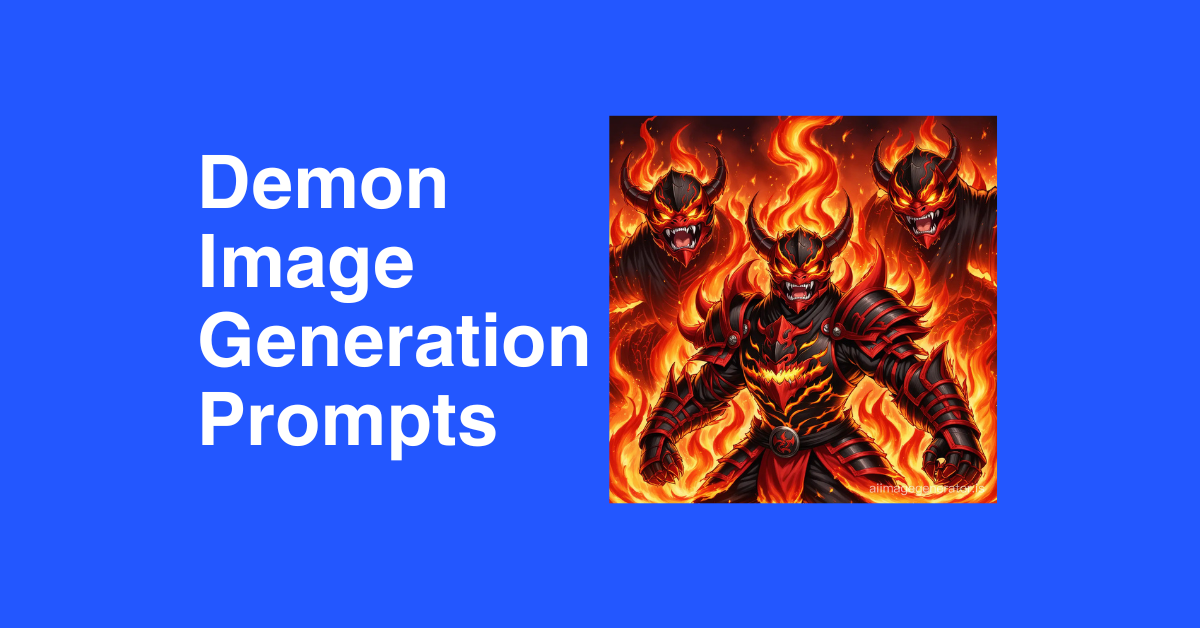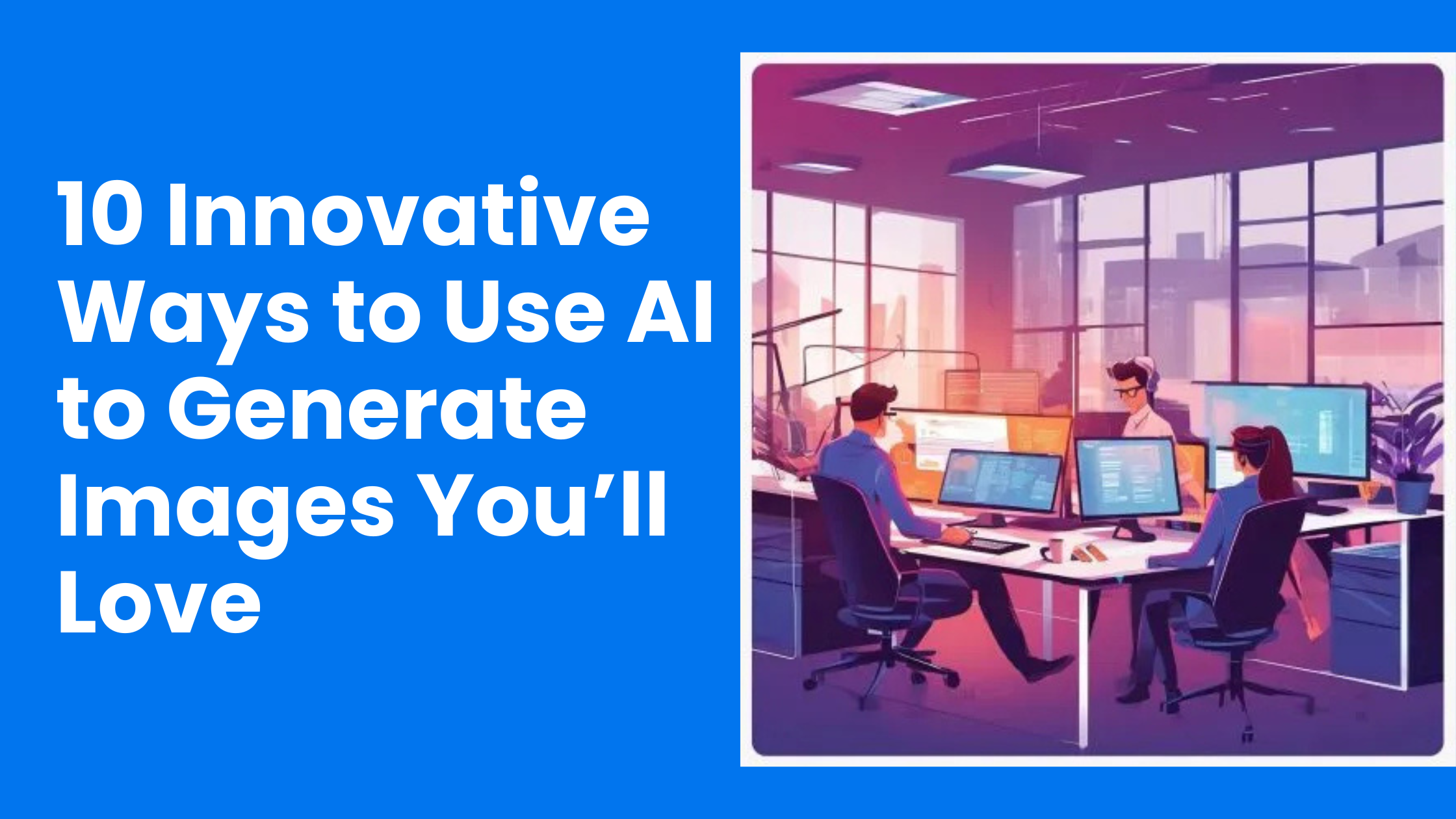
10 Innovative Ways to Use AI to Generate Images You’ll Love
- Image Generators
- November 1, 2024
- No Comments
In an era where technology and creativity increasingly intertwine, artificial intelligence (AI) has emerged as a powerful tool for artists, designers, and professionals across various industries. By learning to use AI to generate images from simple text prompts or enhance existing visuals, creatives are reshaping our understanding of artistic expression. This blog post delves deep into the multifaceted realm of AI-generated imagery, exploring how this innovative approach unlocks new avenues for creativity, expands the boundaries of visual arts, and redefines collaborations between humans and machines. As we journey through the world of AI image generation, we’ll uncover the techniques behind these algorithms, their real-world applications, ethical considerations, and what the future may hold for this captivating intersection of art and technology.
From Text to Canvas: The Rise of AI-Powered Image Synthesis

The journey of transforming words into compelling visuals is not just a flight of fancy; it is becoming a reality thanks to advanced AI technologies. Image synthesis refers to the process by which machines create images based on textual descriptions. This remarkable capability is rooted in natural language processing and computer vision—fields that have seen rapid advancements in recent years.
Understanding Image Synthesis
At its core, image synthesis involves teaching machines to recognize patterns in data. By feeding AI models vast amounts of information, they learn to correlate specific phrases with visual elements. When users input descriptive text, AI generates corresponding images by interpreting the semantic meaning behind those words.
This process uses neural networks, particularly Generative Adversarial Networks (GANs), which consist of two components: the generator and the discriminator. The generator creates images from random noise, while the discriminator evaluates the authenticity of the generated images against real ones. Through continuous feedback, both components improve over time until the generator produces highly realistic images.
Examples of AI-Powered Tools
Many platforms leverage AI to facilitate image generation. DALL-E, developed by OpenAI, is an exemplary model that can generate imaginative and often surreal images based on provided text inputs. From whimsical illustrations of a “two-headed flamingo wearing sunglasses” to realistic portraits of fictional characters, the possibilities are virtually endless.
Another notable tool is Artbreeder, which allows users to merge different images and manipulate them using sliders to adjust features like color, style, and composition. This collaborative approach invites artists and non-artists alike to engage with AI creatively, opening doors to a new form of digital artistry.
The Influence on Creative Processes
As artists and content creators use AI-powered tools, the creative process undergoes a transformation. Traditional methods of brainstorming and sketching evolve into dynamic interactions with technology, allowing for rapid iteration and exploration of concepts. This synergy between human intuition and machine learning fosters unique artistic outputs that might not have been conceived through conventional means.
By generating images from text prompts, creators can visualize ideas quickly, iterate rapidly, and explore a multitude of styles and forms without the limitations of manual drafting. As a result, AI becomes not just a tool but a catalyst for inspiration.
A New Era of Visuals: Exploring the Capabilities of Use AI to Generate Images

As AI image generators continue to evolve, they unveil an impressive array of capabilities that challenge traditional notions of artistic creation. The newfound potential lies in the balance of technological prowess and human imagination, leading to unprecedented visual outcomes.
Expanding Artistic Styles
One of the most exciting aspects of AI image generation is its ability to replicate and innovate upon various artistic styles. By training on diverse datasets, AI models can learn to mimic classic painting techniques, photography styles, and contemporary trends. Artists can experiment with these generative capabilities, combining elements from different styles to create visually striking pieces that blend tradition with innovation.
For instance, imagine an artwork that fuses the bold brushstrokes of Van Gogh’s Impressionism with the clean lines of modern graphic design. Such combinations challenge our perceptions of aesthetics and push the boundaries of how we define artistic movements.
Realism vs. Surrealism
AI’s capacity to bridge realism and surrealism offers intriguing opportunities for expression. While some AI-generated images reflect hyper-realistic details, others embrace the fantastical and absurd. An artist could explore dreamlike landscapes, conjured entirely through AI interpretation, or even delve into abstract compositions that provoke thought and emotion.
This duality enables creators to navigate the spectrum of artistic intent. Whether one seeks to elicit visceral reactions through surreal imagery or convey narratives through lifelike representations, AI serves as a versatile partner in the pursuit of visual storytelling.
Personalization and Customization
Beyond generating images from prompts, many AI tools allow for personalization and customization, catering to individual tastes and preferences. Users can fine-tune specific attributes—such as color palettes, themes, and styles—leading to a more tailored creative experience. Such adaptability empowers individuals to craft artworks that resonate deeply with their visions, resulting in pieces that feel uniquely theirs.
With the rise of social media and digital sharing, personalized content also plays a crucial role in establishing one’s identity as an artist or creator. AI-generated visuals offer fresh ways to cultivate authenticity while appealing to diverse audiences hungry for novelty.
Beyond the Human Eye: The Impact of AI on Artistic Expression

As we delve deeper into AI-generated imagery, it’s essential to consider the broader implications of this shift in artistic expression. By harnessing the power of technology, artists can explore new dimensions of creativity, pushing not only personal boundaries but also altering societal views on art itself.
Redefining the Role of the Artist
Traditionally, the artist holds sole responsibility for creation, often associated with individuality and emotional expression. However, as AI assumes a more prominent role in the creative process, the definition of an artist evolves. Instead of being mere executors of skill, artists become curators and collaborators, guiding AI systems toward desired outcomes while infusing personal perspectives into the work.
This paradigm shift raises questions about authorship, originality, and the value we place on human creativity. Can an artwork generated by AI evoke the same emotional response as one crafted solely by human hands? Perhaps the answer lies in the interplay between human ingenuity and machine capabilities—both essential to the artistic tapestry of the future.
Encouraging Experimentation and Risk-Taking
AI image generation encourages artists to take creative risks, experimenting with concepts that may have otherwise remained unexplored. Given the relatively low cost of generating multiple iterations, artists can venture into uncharted territories, pushing their capacities for innovation.
The freedom to fail without significant investment cultivates a mentality of experimentation, where artists can explore novel ideas without fear of judgment. Embracing this spirit of discovery fosters an atmosphere rich in collaboration and co-creation, both among artists themselves and with AI systems.
Challenging Traditional Boundaries
AI-generated imagery invites discussions surrounding the nature of art and its representation. Is something generated by a machine still considered art? Does it lose inherent value if it lacks the human touch? As these debates unfold, they challenge conventional norms and encourage us to reevaluate cultural constructs surrounding artistic expression.
In embracing AI, we may redefine what it means to be an artist or even what constitutes art. As machine-generated visuals become more integrated into our culture, they prompt questions about aesthetic appreciation, encouraging society to engage with art differently.
The Art of the Algorithm: Demystifying the Techniques Behind Use AI to Generate Images
To fully appreciate the potential of AI in image generation, it’s essential to demystify the underlying techniques driving this transformative technology. A closer examination reveals the sophisticated processes involved in creating visually stunning images that captivate audiences.
Neural Networks and Deep Learning
At the heart of AI image generation lie neural networks—computational models inspired by the structure of the human brain. These networks consist of interconnected nodes, or neurons, which work together to identify patterns and relationships within complex datasets.
Deep learning, a subset of machine learning, employs layered architectures of neural networks to analyze vast amounts of data. In terms of image generation, this means training on millions of images so that the model learns intricate details and styles that contribute to the final output.
The more extensive and diverse the training data, the better the algorithm becomes at understanding and generating images that align with user expectations.
Generative Adversarial Networks (GANs)
One of the most revolutionary techniques in AI image generation is Generative Adversarial Networks (GANs). The concept relies on two competing neural networks—one generating images and the other evaluating their quality against real visuals.
Through adversarial training, both networks inform each other, gradually improving their abilities over time. This method leads to astonishingly realistic outcomes, making GANs a favored choice for a plethora of creative projects ranging from art to fashion design.
Moreover, GANs play a pivotal role in creating what is known as “style transfer,” wherein an AI model takes the stylistic elements of one image and applies them to another. For example, one could transform a photograph into a piece resembling a famous painting by adjusting the texture, color schemes, and brush strokes—an extraordinary feat of algorithmic creativity.
The Role of Data Quality
The effectiveness of AI image generators hinges not only on the quantity of training data but also on its quality. High-resolution, diverse datasets lead to improved outputs, enabling the model to capture subtleties that enhance realism and artistic flair.
Curating datasets that encompass a wide range of styles, subjects, and cultural contexts equips AI models with the knowledge required to generate compelling visuals. Ensuring diversity in training sets mitigates bias, paving the way for inclusive artistic representation in the outcomes produced by AI algorithms.
From Pixels to Possibilities: Real-World Applications of AI Image Generation
The impact of AI-generated imagery extends beyond the creative realms of traditional art. Harnessing its potential opens up a wealth of possibilities across various industries, revolutionizing how businesses and individuals approach visual communication.
Marketing and Advertising
Within the marketing sector, AI image generation is becoming a go-to solution for creating engaging content. Companies can efficiently produce eye-catching visuals tailored to specific campaigns or target demographics. This capability reduces reliance on stock images, as marketers can generate custom visuals relevant to their branding efforts.
Imagine a travel company wanting to promote an exotic destination. Rather than spending resources on a photoshoot, they can use AI to create captivating images that evoke wanderlust, all while ensuring alignment with the company’s aesthetic values.
Additionally, personalized marketing materials can be generated based on consumer preferences, ensuring that the content resonates more profoundly with individuals. This level of customization enhances audience engagement and fosters deeper connections between brands and consumers.
Video Games and Film Production
In the entertainment industry, AI image generation plays a pivotal role in character creation, set design, and concept art development. Game developers and filmmakers can leverage AI tools to visualize complex environments, craft unique characters, and streamline the production process.
AI-generated visuals assist in brainstorming sessions, providing creative teams with instant references and inspiration. As the technology matures, the possibility of developing entire animated sequences or scenes generated by AI becomes increasingly feasible, allowing creators to focus on storytelling and narrative depth.
Fashion Design and Product Development
Fashion design is another domain reaping the benefits of AI image generation. Designers can use AI to create virtual clothing prototypes, enhancing the efficiency of the design process. By generating realistic product images, fashion brands can showcase collections before physical samples are produced, reducing waste and accelerating time-to-market.
Furthermore, AI aids in predicting trends by analyzing consumer behavior and social media patterns, allowing designers to stay ahead of the curve. The combination of predictive analytics and visual generation stimulates innovation while ensuring relevance in a fast-paced industry.
AI as a Creative Partner: Exploring the Collaboration Between Humans and Machines
The integration of AI in image generation signifies a departure from viewing machines merely as tools. Instead, it positions AI as a creative partner that complements human ingenuity. This collaboration blurs the lines between human and machine contributions, fostering a symbiotic relationship that enhances the creative landscape.
The Co-Creation Dynamic
When artists and technologists collaborate with AI, the dynamics of co-creation come into play. This partnership invites artists to work alongside AI systems rather than in isolation, leading to innovative approaches to art-making. Artists can experiment with AI-generated suggestions, refining and modifying outputs to reflect their vision.
By embracing the role of curator, the artist guides the creative direction while leveraging the computational power of AI to explore new artistic terrains. This dynamic introduces a layer of unpredictability, sparking unexpected discoveries that enrich the creative process.
Cultivating Diverse Perspectives
AI image generation also facilitates diverse perspectives in artistic expression. As AI systems learn from vast datasets, they can introduce artists to inspirations from cultures and styles that may be less familiar. This intersection of influences broadens horizons, encouraging cross-cultural collaboration and experimentation.
Artists who engage with AI not only discover new visual languages but also challenge their assumptions about originality. By blending their ideas with those generated by AI, creators can build bridges between artistic traditions and contemporary expressions, fostering a sense of communal creativity.
Embracing Limitations and Serendipity
While AI excels at generating images based on learned patterns, it often introduces an element of surprise or serendipity. The unexpected results generated by AI may lead artists down paths they had not considered, prompting them to embrace limitations as catalysts for innovation.
This notion of creative constraint encourages a mindset of exploration, where artists grapple with the implications of AI-generated outputs and adapt them into their practice. The collaboration shifts from a linear creative process to a fluid exchange of ideas, pushing the boundaries of what is possible.
The Ethical Landscape of AI Image Generation: Addressing Bias and Ownership
As AI image generation gains traction, addressing the ethical implications becomes paramount. The intersection of technology and creativity invites critical discussions around bias, ownership, and the repercussions of machine-generated art.
Navigating Bias in AI Models
AI systems learn from the data they are trained on, which inherently means that biases present in those datasets can inadvertently influence the generated outputs. If certain demographic groups or artistic styles are underrepresented in training data, the algorithms may perpetuate stereotypes or fail to capture the richness of diverse experiences.
To combat bias, practitioners must prioritize the curation of inclusive datasets that reflect a wide array of cultural contexts and artistic expressions. By consciously selecting training examples, we can work towards mitigating biases and ensuring that AI-generated imagery represents a broader spectrum of humanity.
Intellectual Property and Ownership
The emergence of AI-generated imagery raises complex questions regarding intellectual property rights. If an AI generates a piece of art, who holds ownership—the artist who guided the process, the developer of the AI model, or the machine itself? Legal frameworks surrounding copyright must evolve to address these challenges as the line between human and machine authorship continues to blur.
Collaborative agreements between artists and technology developers are essential in navigating ownership issues. Establishing clear guidelines around credit and compensation will foster an equitable ecosystem in the creative landscape.
The Responsibility of Creators
As creators embrace AI image generation, they must remain cognizant of their responsibilities toward society. Engaging with AI requires a commitment to ethical practices and accountability, ensuring that the art produced contributes positively to cultural discourse.
Artists wield significant influence over how AI-generated imagery shapes public perception. They should strive to create works that challenge harmful narratives, advocate for positive change, and raise awareness of pressing social issues. By harnessing AI responsibly, creators can amplify their voices and effect meaningful transformations in the art world.
AI-Generated Art: Navigating the Future of Visual Expression
The rapid advancement of AI technology raises intriguing questions about the future of visual expression and what constitutes art. As society continues to integrate AI-generated imagery into everyday life, we must consider the implications of these changes.
The Evolution of Aesthetic Appreciation
As AI-generated art becomes more prevalent, our appreciation of aesthetics may evolve. Viewers may begin to embrace new definitions of beauty and creativity, expanding their horizons beyond traditional notions of artistic merit. The allure of AI-generated visuals lies in their ability to surprise, provoke thought, and challenge expectations.
As audiences encounter AI-generated art, they may find themselves drawn to the stories and emotions conveyed through the machine-crafted pieces, regardless of their origin. This shift has the potential to democratize art appreciation, inviting more people to engage with visual culture and explore diverse creative interpretations.
Fostering Collaborative Communities
The future of visual expression will likely revolve around collaborative communities where artists, technologists, and AI coexist harmoniously. By forming cross-disciplinary partnerships, creators can harness the strengths of both human creativity and machine intelligence, leading to groundbreaking artistic projects.
These collaborations can extend beyond individual endeavors, fostering communities where shared knowledge and resources propel collective innovation. As artists gather to explore the possibilities of AI, they can cultivate an environment where experimentation thrives, resulting in novel artistic movements that reflect the complexities of the modern world.
The Balance of Authenticity and Innovation
While AI-generated art presents exciting opportunities, it’s crucial to strike a balance between innovation and authenticity. As artists navigate this evolving landscape, they should remain grounded in their unique perspectives and experiences, ensuring that their creative identities shine through.
Authenticity lies at the heart of art’s emotional resonance, and artists must remain vigilant in expressing their truths amid the allure of AI’s capabilities. By merging the best of human intuition with AI’s computational prowess, creators can forge a path that honors both tradition and progress, enriching the artistic narrative.
The Democratization of Art: How AI is Making Image Creation Accessible to All
One of the most profound impacts of AI image generation is its democratizing influence on art creation. As technology becomes more accessible, the barriers traditionally preventing individuals from engaging with visual arts are lifted, paving the way for a vibrant and inclusive creative landscape.
Breaking Down Barriers
Historically, creating art often required specialized skills, formal education, and access to expensive tools. However, AI image generation tools have made it significantly easier for anyone to create visually stunning images, regardless of their background or experience.
Individuals can now generate high-quality visuals with minimal technical know-how, allowing aspiring artists, hobbyists, and content creators to participate in artistic expression. This accessibility fosters diverse voices and perspectives in the art world, as those previously marginalized can now contribute their unique narratives.
Cultivating New Talent
As AI makes image creation more attainable, it nurtures new talent and sparks interest in the arts. Enthusiasts can experiment with different styles, techniques, and subjects, gaining confidence in their creative abilities. The opportunity to explore without fear of failure empowers individuals to pursue their passions and develop their artistic skills.
Communities centered around AI-generated art thrive, as people share their creations, seek feedback, and celebrate one another’s work. This collaborative environment fosters mentorship and support, further cultivating emerging talents eager to make their mark in the creative sphere.
Transforming Education and Learning
AI image generation has the potential to revolutionize art education. Traditional curricula can be augmented with AI tools, allowing students to explore a range of styles and mediums while receiving real-time feedback on their work.
By incorporating AI-driven platforms into classrooms, educators can inspire a new generation of creators who are well-versed in both artistic principles and cutting-edge technology. This fusion of skills prepares students to navigate a rapidly evolving artistic landscape, ensuring they are equipped for future creative endeavors.
Conclusion
The integration of AI in image generation signifies a monumental shift in the creative landscape, unlocking new avenues for artistic expression, collaboration, and accessibility. As artists and technologists work hand in hand, the boundaries of creativity continue to expand, inviting us to question our understanding of art itself.
From transforming text into captivating visuals to challenging traditional notions of authorship, AI image generation propels us into a future rich with possibilities. As we embrace this new era, it is essential to navigate the ethical implications and foster responsible practices that empower creators, honor diversity, and celebrate the fusion of human and machine creativity.
Ultimately, the journey of using AI to generate images is an exploration of the interplay between technology and imagination—a journey that promises to reshape the very fabric of art and visual culture as we know it. As we move forward, let us approach this revolution with curiosity, creativity, and a commitment to nurturing a vibrant and inclusive artistic community.
Looking to learn more? Dive into our related article for in-depth insights into the Best Tools For Image Generation. Plus, discover more in our latest blog post on Weird AI Image Generators . Keep exploring with us!
Related Tools:
Image Generation Tools
Video Generators
Productivity Tools
Design Generation Tools
Music Generation Tools
For more AI tools, explore all categories by clicking here.

